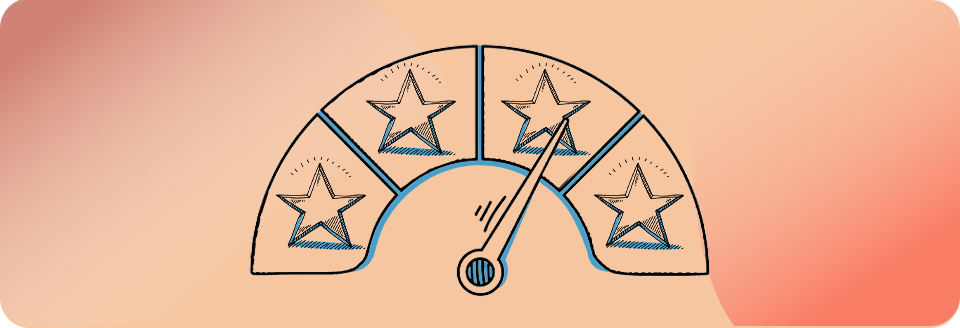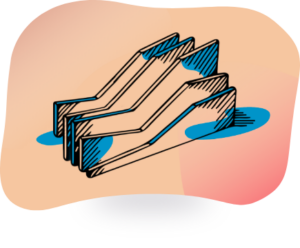Customer Success: 2 Key Metrics to Track & Measure Success

Key Takeaways:
- If there is one SaaS metric you should monitor carefully, then it is your churn rate. The lower the percentage, the better
- However, the churn rate does not give you the full picture and health of your business
- To understand the impact of churn on your revenue, Net Retention Rate (NRR) and Gross Retention Rate (GRR) are more effective markers
- Choosing between the two metrics can be tricky as the metric you employ can help determine the health of your business
Almost every profitable enterprise relies on its customer base to succeed.
Customer success is, even more, a critical consideration for businesses that provide solutions through a SaaS model.
Customer success is an important component of every department: marketing, sales, onboarding, support, hiring, or operations. The goal is to deliver value to the customers.
Therefore, the question that arises is: How do you measure it?
Few critical metrics for customer success provide valuable insights into the many factors that determine your customer’s success. These metrics help businesses understand and explain how and why a customer uses their solution, how many customers they are retaining, and the value of both retained customers and those lost to attrition.
For many organizations, the answer to these questions lies in using several methods or metrics. At the same time, these metrics are not static and can keep changing through the customer life cycle.
Why are Customer Success Metrics So Critical?
The metrics for customer success come into the picture because of customer churn. And less than ideal customer service is one of the most dominant reasons why customer churn occurs.
According to one study, 65% of customers have switched to a different brand because of poor customer experience. So even if you have the most competitive product in the industry, a mediocre experience will lead you to lose customers.
A crucial reason for reducing your churn rate is the reality of just focusing on new customer acquisitions.
While the success rate of selling to a new customer stands at a mere 5-20%, your success rate of selling to an existing customer is 60-70%! This is because your current customers are already happy using your product or service. They trust your business, which is so important if businesses want to remain relevant in the current competitive landscape.
New customers, on the other hand, need to be convinced why they should spend money on your product.
Existing customers will be the key to your business success.
Consequently, you can significantly reduce churn if you know what your current customer base is experiencing and what you can do to alleviate some of their pain points.
The 2 Key Metrics to Measure the Efficacy of Your Customer Success Program: NRR & GRR

Broadly speaking, there are two metrics that can help you measure the amount of revenue you have retained or revenue that you did not lose to churn.
These customer success metrics are – Net Retention Rate (NRR) and Gross Retention Rate (GRR).
What is Net Retention Rate in SaaS?
Net Retention Rate is a SaaS-based metric that helps businesses calculate the percentage of revenue they have retained from existing customers over a period of time.
This can be monthly or yearly and can include upgrades, downgrades, cross-sells, and cancellations.
In simple terms, your NRR helps you understand how many of your existing customers are actually staying loyal and extending their subscriptions.
NRR, also known as Net Dollar Retention, helps you understand whether the service you are providing has the quality of engaging new customers and meeting their needs. It’s a key metric that can help uphold a company’s financial performance and comes in handy when evaluating the quality of customer success.
- Calculating Net Retention Rate
You first add your Churn MRR and Expansion MRR and subtract them from Contraction MRR.
Further, subtract the result from starting MRR. Now, divide the result by starting MRR and then go on to multiply it by 100 to get your Net Retention Rate.
NRR = (Starting MRR – Contraction MRR – Churn MRR + Expansion MRR)/ Starting MRR x 100
Here’s what this means:
- MRR: Monthly Recurring Revenue or the amount of recurring revenue a company predicts to earn each month
- New MRR: Monthly Recurring Revenue from new customers
- Contraction MRR: These are your downgrades or lost MRR from existing customers
- Churned MRR – These are your lost MRR from canceled customers
- Expansion MRR- These are your upgrades or MRR from existing customers
- Improving Net Retention Rate
To begin with, you can encourage your users to upgrade their trial accounts to paid accounts using modals.
A modal is a rectangular UI element that is commonly used in SaaS businesses to notify users of something important.
Modals are effective as they grab the customer’s attention as they normally take up most of the user interface. Contextual in-app messaging is another great way to help increase your NRR.
What is Gross Retention Rate in SaaS?
Your Gross Retention Rate is the ability of your business to retain its existing customers.
When you retain your customers, you retain revenue. So, GRR is the percentage of customers that a business is able to retain at the existing price point.
Unlike NRR, your GRR does not take into account revenue earned from expansion, upsells, and cross-sells. But it does include any downgrades or cancellations of subscriptions. Your Gross Retention Rate simply tells you how happy your existing customers are. It is a stability indicator of any SaaS-based business model.
- Calculating Gross Retention Rate
GRR is the rate of existing customers retained during a given period.
To calculate GRR, subtract your MRR at the beginning of the period from your downgraded MRR during the period.
Further, subtract your downgraded MRR with your contraction MRR. Now, divide the result by the MRR at the beginning of the period. GRR = (MRR start – Churn – Contraction) / MRR
- Improving Gross Retention Rate
An excellent method to boost your GRR is by giving your customers the opportunity to speak out about their concerns.
This can be done through surveys which will enable you to determine customer experience. The onboarding process plays a critical role here, ensure you have a solid onboarding process in place to retain more customers, and consequently revenue.
What Should You Focus On – NRR or GRR?
The debate over whether to pick NRR or GRR is tricky.
Net Retention Rate might look like the better alternative as it takes into account two revenue streams – upsells and renewals.
However, Gross Retention Rate has a small advantage over NRR in the fact that it measures the long-term health of any SaaS business. Keep in mind the below tips when deciding:
- NRR is a good metric for customer success when you are considering growth. It’s what you need to focus on finding the perfect product-market fit to attain a high GRR. A high GRR is only possible when your customers find your product useful and continue their business with you.
- Remember that when it comes to funding opportunities, your prospective investors will closely scrutinize your GRR. Between two businesses with high NRR, investors are more likely to place their bets on the business that has a higher GRR.
- NRR and MRR go hand-in-hand. So as you continue to chase growth and scale new heights, ensure that you are seeking a better market fit for your product.
- Regardless of whether NRR or GRR is the priority, track both metrics carefully. Make use of a holistic subscription billing solution to capture insights from the payment process for strategic decision-making. Such solutions can help you gather relevant data about your business’s expansion, contraction, and churned revenue.
- A good way of determining whether you are on the right path with your customer success metric is to determine the quality of NRR and GRR. While the standard benchmark varies across sectors, the closer your GRR is to 100%, the better the health of your company. Similarly, if your NRR is anywhere above 100%, your business is growing rapidly.
Wrapping Up
Retaining existing customers should be at the top of the to-do list of any SaaS company.
GRR and NRR are not just calculations to measure dollar value. These metrics of customer success are crucial as they show you your customer’s journey and their success with your product/service.
Optimizing your NRR and GRR makes a world of difference when you are going for funding. To give your company the best chance of securing success, such customer success metrics should be explored and improved upon.
Looking to make customers your best growth engine?
Benefit from a world-class CS strategy at scale with Regalix.




